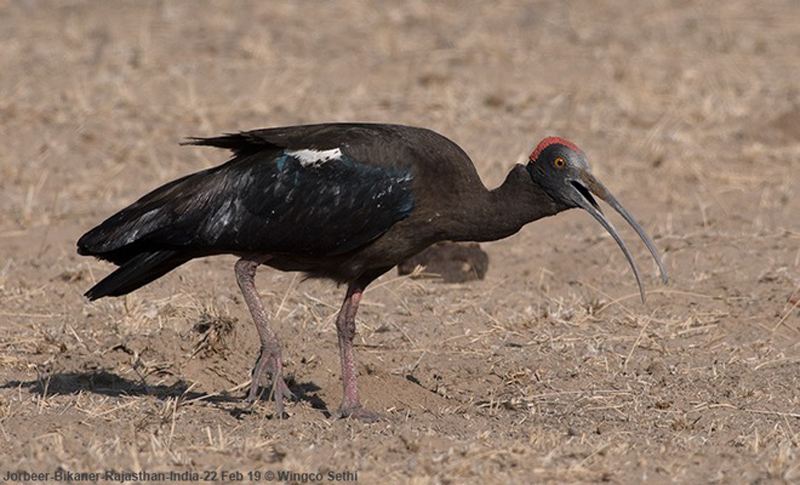Pseudibis davisoni
IUCN
LCBasic Information
Scientific classification
- name:Pseudibis davisoni
- Scientific Name:Pseudibis davisoni,White-shouldered Ibis,Oriental Black Ibis
- Outline:Wading birds
- Family:Ciconiiformes Ibisidae Ibis
Vital signs
- length:60cm
- Weight:1-1.5kg
- lifetime:No verification information
Feature
The sound when taking off from the ground is strange and characteristic
Distribution and Habitat
It was once widely distributed in southwest China and Southeast Asia, but now only exists in northern India, Myanmar and Borneo. It likes to live in swampy woodlands and drier plain farmland, stubble fields, dry riverbanks near forest streams. Its habits are similar to those of the white ibis, but it rarely forms groups, usually in pairs or families, and occasionally alone.
Appearance
The body is generally gray-brown; the inner small coverts are white, the flight feathers and tail feathers are dark or metallic blue-green, and there is a white spot on the wings. The head is naked, black, the back of the head and the neck are blue-gray; the bill is gray-black, long and curved downward; the throat is red; the legs are coral red.
Details
White-shouldered Ibis is called White-shouldered Ibis in foreign language. There are two subspecies of black ibis, and most of them are Burmese subspecies active in my country.

The call of White-shouldered Ibis when taking off from the ground is strange and characteristic, especially in the breeding season. It feeds on insects, fish, shrimp, snakes and frogs in swamps and along muddy riverbanks, or in harvested rice fields, and also pecks at a variety of mature crops. Its current distribution in my country is unknown, and only one male bird specimen was collected in southwestern Yunnan in 1899. It was listed as a globally endangered species in 1994.
Listed in China's "National Key Protected Wildlife List" (February 5, 2021) at level one.
Protect wildlife and eliminate game.
Maintaining ecological balance is everyone's responsibility!








